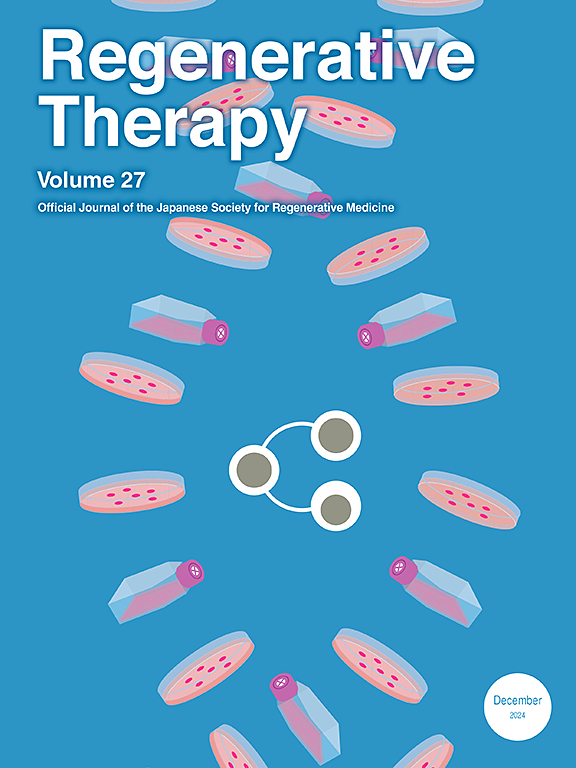Bioactive and degradable collagen-based three-dimensional scaffold encapsulated with adipose mesenchymal stem cells-derived exosomes improved diabetic wound healing
IF 3.4
3区 环境科学与生态学
Q3 CELL & TISSUE ENGINEERING
引用次数: 0
Abstract
A diabetic wound is the most frequent form of chronic wound. Because diabetic wounds have multiple factors contributing to their development, the best treatments involve using a combination of approaches. Herein we assessed whether bioactive and degradable bioengineered micro-porous collagen-based three-dimensional scaffold (CTS) encapsulated with adipose mesenchymal stem cells (ASCs)-derived exosomes could accelerate the wound healing process in diabetic rats. Diabetic animals were assigned to the control group, CTS group, Exo group, and CTS+Exo group. Tissue samples were collected on days 7, 14, and 21 for evaluations including stereological, molecular, and tensiometrical assessments. The findings showed that in the treatment groups, there was a notably increase in wound closure rate, total volumes of newly formed epidermis and dermis, numerical densities of fibroblasts and blood vessels, collagen density, and biomechanical parameters than the control group, with the most noticeable changes seen in the CTS+Exo group. Additionally, there was a notably increase in the transcript of miRNA-146a, TGF-β, bFGF, and VEGF genes in the treatment groups than the control group, with the highest expression observed in the CTS+Exo group. In the CTS+Exo group, there was a much greater decrease in TNF-α and IL-1β expression, as well as in the number of neutrophils, compared to the other groups. These results validated that the combination of CTS and ASCs-derived exosomes has a greater effect on improving diabetic wound healing.
脂肪间充质干细胞衍生外泌体包裹的生物活性可降解胶原基三维支架改善糖尿病伤口愈合
糖尿病性伤口是最常见的慢性伤口。由于糖尿病性伤口的形成有多种因素,所以最好的治疗方法是综合使用多种方法。本研究评估了脂肪间充质干细胞(ASCs)衍生外泌体包裹的生物工程微孔胶原基三维支架(CTS)是否能加速糖尿病大鼠的伤口愈合过程。将糖尿病动物分为对照组、CTS组、Exo组和CTS+Exo组。在第7、14和21天收集组织样本,进行包括体视学、分子学和张力学评估。结果显示,各治疗组创面闭合率、新形成表皮和真皮层的总体积、成纤维细胞和血管的数值密度、胶原密度和生物力学参数均显著高于对照组,其中以CTS+Exo组变化最为显著。治疗组miRNA-146a、TGF-β、bFGF、VEGF基因转录量均显著高于对照组,其中以CTS+Exo组表达量最高。在CTS+Exo组中,与其他组相比,TNF-α和IL-1β表达以及中性粒细胞数量的下降要大得多。这些结果验证了CTS和ascs来源的外泌体联合使用对改善糖尿病伤口愈合有更大的作用。
本文章由计算机程序翻译,如有差异,请以英文原文为准。
求助全文
约1分钟内获得全文
求助全文
来源期刊

Regenerative Therapy
Engineering-Biomedical Engineering
CiteScore
6.00
自引率
2.30%
发文量
106
审稿时长
49 days
期刊介绍:
Regenerative Therapy is the official peer-reviewed online journal of the Japanese Society for Regenerative Medicine.
Regenerative Therapy is a multidisciplinary journal that publishes original articles and reviews of basic research, clinical translation, industrial development, and regulatory issues focusing on stem cell biology, tissue engineering, and regenerative medicine.
 求助内容:
求助内容: 应助结果提醒方式:
应助结果提醒方式:


